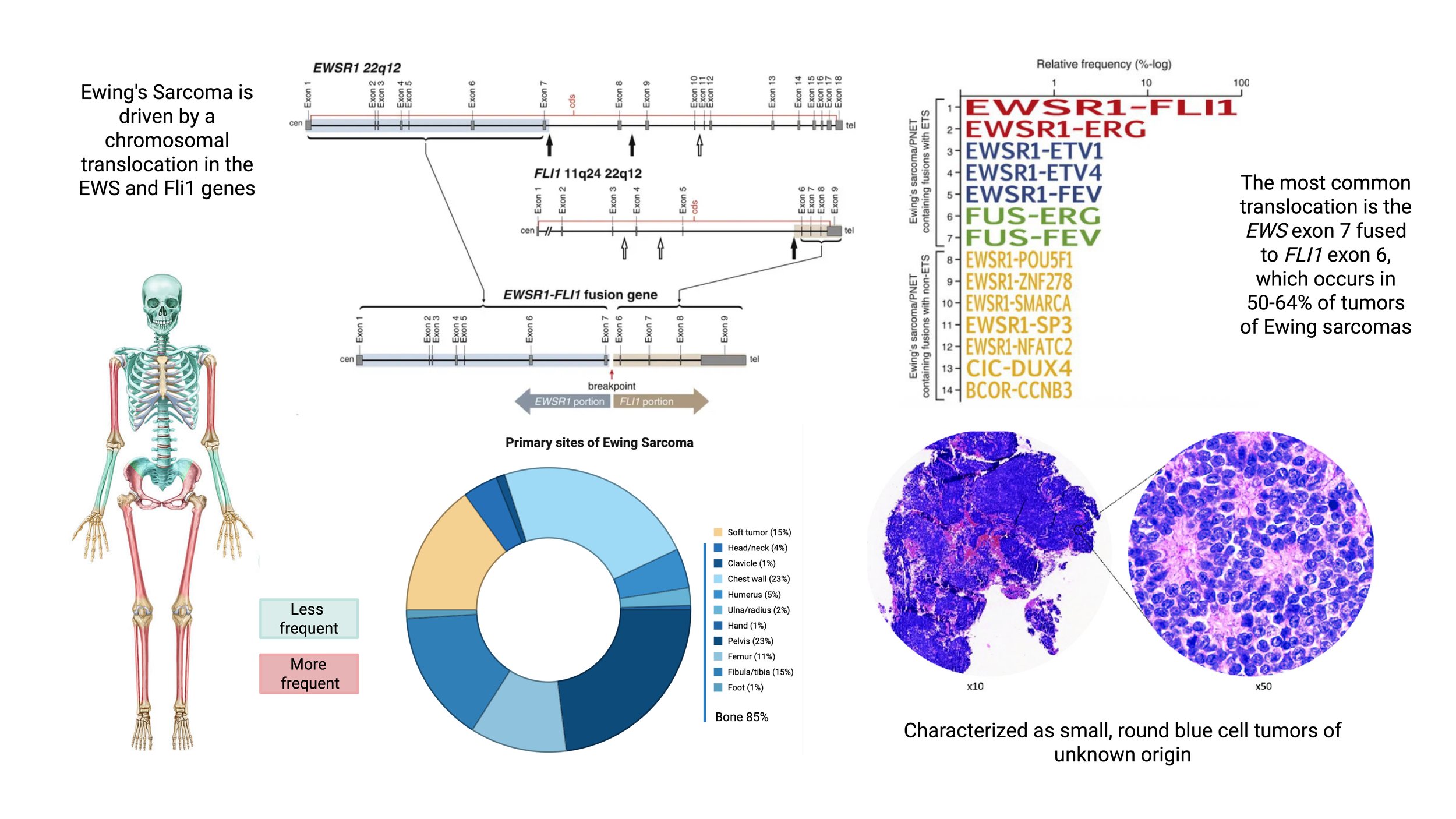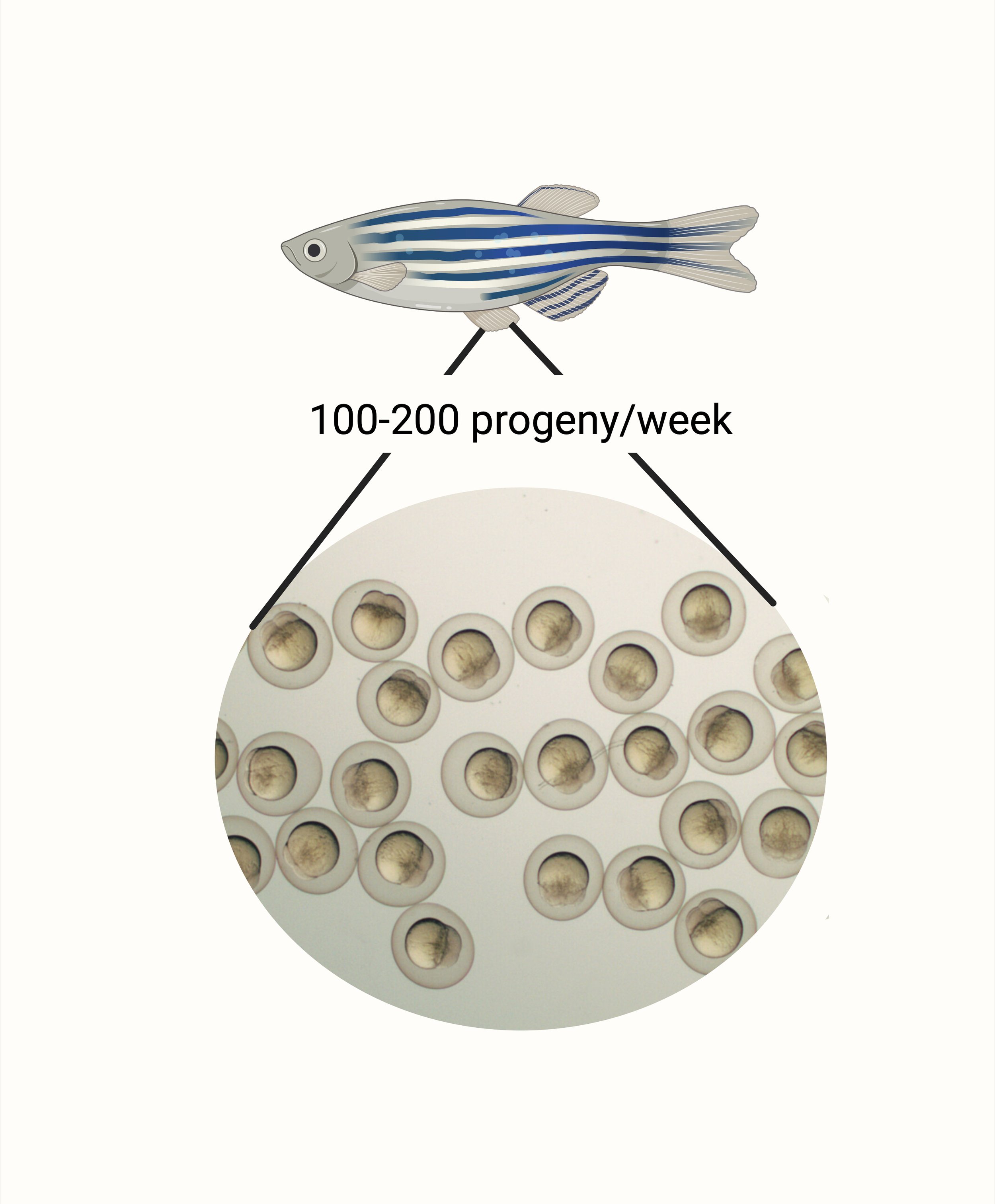Understanding Ewing Sarcoma through Zebrafish
Over the last three decades, the 5-year survival rate for localized and metastatic Ewing Sarcoma has not improved, highlighting the urgent need to identify new clinically relevant targets
About Ewing Sarcoma
Ewing Sarcoma is the second most common malignant bone tumor in pediatrics after osteosarcoma, constituting 3% of all childhood malignancies.
There are more than 250 cases of Ewing sarcoma diagnosed in children and teens in the United States each year.
25% of patients with initially localized disease ultimately relapse. No standard therapy exists for relapsed and refractory Ewing sarcoma.
A better understanding of the biology of Ewing sarcoma metastasis is needed to increase survival rates.
Zebrafish as our Cancer Model
High Fecundity
Fluorescent Vasculature
Optical Clarity
Casper Strain
Our Research
Wnt signaling plays an important role in cancer biology, including Ewing sarcoma. Non-canonical Wnt signaling regulates multiple cell functions including proliferation, differentiation, adhesion, polarity, motility, and migration.
We use our Ewing sarcoma zebrafish model to test multiple drug compounds at the same time to identify novel targets.
Our high throughput screen identified Gabaculine, a GABA transaminase inhibitor, as a potential hit.
Notch1 is a clinically relevant target that plays a role in angiogenesis. It has to be cleaved 3x to translocate into the nucleus by Y-secretase. Nirogacestat blocks Y-secretase, preventing Notch1 translocation.







